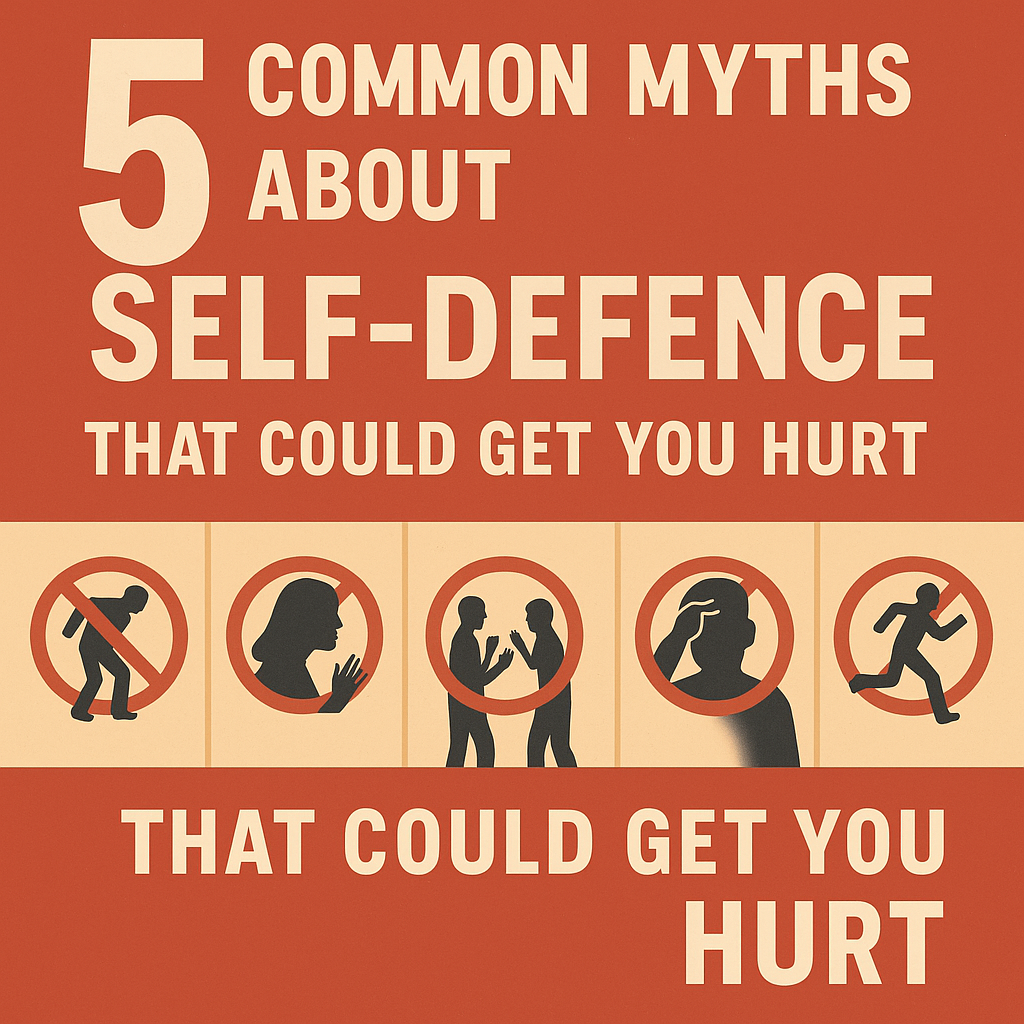
5 Common Myths About Self-Defence That Could Get You Hurt
Not Everything You Hear Is True
In the world of self-defence, misinformation can be dangerous. Movies, social media, and word-of-mouth often spread myths that sound good—but could lead to bad decisions in real-life situations.
This post breaks down five of the most common self-defence myths—and what you should know instead.
❌ Myth 1: “Just kick them in the groin and run.”
Truth: While a groin kick can be effective, it’s not a guaranteed showstopper. Many attackers are high on adrenaline, substances, or simply don’t react as expected. It’s one tool—not your whole plan.
❌ Myth 2: “You can talk your way out of anything.”
Truth: De-escalation is a great skill—but it doesn’t always work. If someone’s committed to violence, they may not respond to logic or calm words. Be prepared to act if talk fails.
❌ Myth 3: “If you’re smaller or weaker, you’re helpless.”
Truth: Technique beats strength. Many self-defence systems are designed for smaller people to escape larger attackers. Speed, awareness, and leverage are your allies.
❌ Myth 4: “You’ll rise to the occasion.”
Truth: You’ll fall to your level of training. In a high-stress situation, your brain defaults to what it knows well. If you haven’t practiced, you’ll likely freeze or fumble.
❌ Myth 5: “Self-defence ends when the attacker runs away.”
Truth: Always be aware of secondary threats—accomplices, retaliation, or even legal consequences. Your job isn’t just to fight—it’s to survive and stay safe afterward.
🔚 Conclusion: Train Smart, Think Realistically
Self-defence is about preparation, not fantasy. Ditching these myths makes you more aware, more adaptable, and ultimately safer. Trust your instincts, train regularly, and stay grounded in what works.
💬 Have You Heard Any of These Myths?
Drop a comment and let us know what other bad advice you’ve come across—we might feature it in a future post!



